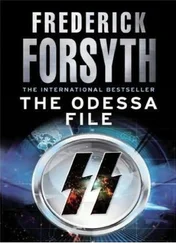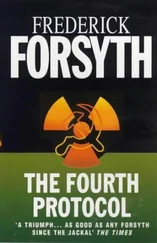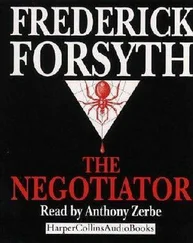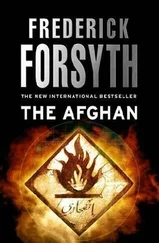“Semper Fi, Dad.”
The line on the screen went from mountain peaks to flatline. The bleep converted to a single wail. A “crash” team appeared at the door. Alex McCrae was with them. He strode past the seated figure of the general’s son and glanced at the bottle behind the bed. He held up an arm at the crash team and gently shook his head. The team withdrew.
* * *
After a few minutes, the son rose and left the room. He said nothing, just nodded to the surgeon. In the ICU, a nurse drew the sheet up over the face. The son walked the four flights down to the parking lot.
In his car twenty yards away, Det. Hall sensed something and awoke from a light sleep. The general’s son walked across the parking lot, stopped and looked up. Dawn was still two hours away. The sky was black, the moon had set. Far above the stars glittered; hard, bright, eternal.
Those same stars, unseen in a pale blue sky, would be looking down on another man, lost to sight in a wilderness of sand. The standing man looked up at the stars and said something. The Virginia detective did not catch it. What the Tracker said was: “You just made this very personal, Preacher.”
In a world of code names to hide real identities, the Tracker had given his new helper the pseudonym Ariel. It amused him to choose the sprite from Shakespeare’s Tempest , who could fly invisibly through space and get up to whatever mischief he wanted.
But if Roger Kendrick struggled on planet Earth, he was nothing like that when he sat before the treasure trove of intoxicating equipment the U.S. taxpayers had provided him. As the man from Fort Meade had said, he became a fighter ace, now at the controls of the best interceptor money could buy.
He spent two days studying the construction the Preacher had built to mask his IP address and thus his location. He also watched the sermons and became convinced of one thing at the outset. The computer genius was not the masked man who preached religious hatred. There was another somewhere, his real opponent, the enemy ace flying against him; skilled, elusive, capable of spotting any mistake he might make and then shutting him out.
Had Ariel but known it, his cyberenemy was Ibrahim Samir, British, born of Iraqi parentage, schooled at UMIST — the University of Manchester Institute of Science and Technology. Kendrick thought of him as the Troll.
It was he who had invented the proxy server to create the false IP address behind which he could hide his master’s real location. But once, at the beginning of the sermon campaign, there had been a real IP, and once he had that, Ariel could place the source anywhere on the face of the Earth.
He also perceived very quickly that there was a fan base. Enthusiastic disciples were able to post messages for the Preacher. He determined to join it.
He realized the Troll would never be deceived unless Ariel’s alter ego was detail perfect. Ariel created a young American called Fahad, son of two Jordanian immigrants, born and raised in the Washington area. But first he studied.
He used the background of the long-dead terrorist Abu Musab al-Zarqawi, a Jordanian who had headed al-Qaeda in Iraq until wiped out by Special Forces and a fighter strike. A copious biography was online. He came from the Jordanian village of Zarqa. Ariel created two parents who came from the same village, lived down the same street. If questioned, he could describe it from online information.
He re-created himself, born to his parents two years after they arrived in the USA. He could describe the school he went to, though now supposedly he’d been removed because of panic attacks.
And he studied Islam from online international courses, the mosque he and his parents attended and the name of its resident imam. Then he applied to join the Preacher’s fan base. There were questions — not from the Troll personally but from another disciple in California. He answered them. There were days of delay. And then he was accepted. All the while he kept his own virus, his malware, hidden but ready for use.
* * *
There were four Taliban fighters in the brick office in the village outside Ghazni, the capital of the Afghan province of the same name. They sat, as they preferred, not on chairs but on the floor.
Their robes and cloaks were wrapped around them, for although it had just turned into the month of May, there was still a chill wind off the mountains, and the brick government building had no heating.
Also seated were three government officials from Kabul and the two farangi officers from NATO. The mountain men were not smiling. They never did. The only time they had seen farangi (foreign, white) soldiers had been in the sights of a Kalashnikov. But that was a life they had come to the village to abandon.
There is in Afghanistan a little-known program called simply Reintegration. It is a joint venture by the Kabul government and NATO, run on the ground by a British major general named David Hook.
The avant-garde thinking among the best brains has long been that Taliban body count alone will never win. As fast as Anglo-American commanders congratulate themselves that one hundred, or two or three hundred, Taliban fighters have been taken out, more just seem to appear.
Some come from the Afghan peasantry, as they always have. Some among these volunteer because relatives — and, in that society, an extended family may number three hundred — have been killed by a misdirected missile, a wrong-target fighter strike or careless artillery; others because they are ordered to fight by their tribal elders. But they are young men, little more than boys.
Also young are the students from Pakistan, arriving in droves from the religious madrassah schools, where for years they study nothing but the Koran and listen to the extremist imams until they are groomed to fight and die.
But the Taliban army is like no other. Its units are extremely local to the area that bred them. And the reverence to the veteran commanders is total. Take out the veterans, reconvert the clan chiefs, bring in the tribal heads, and an entire county-sized area can simply abandon the fighting.
For years, British and American Special Forces have been disguising as mountain men, slipping through the hills to assassinate the middle- and upper-ranking Talib leaders, reckoning that the small fry are not really the problem.
Parallel with the night hunters is the Reintegration Program that seeks to “turn” veterans, to take the olive branch held out by the Kabul government. That day in the hamlet of Qala-e-Zal, General Hook and his Australian assistant, Captain Chris Hawkins, were representing the Force Reintegration Cell. The four wizened Talib chiefs, crouching along the wall, had been coaxed out of the mountains to return to village life.
As with all fishing, there has to be bait. A “reintegrater” has to attend a course in de-indoctrination. In exchange, there is a free house, a flock of sheep to enable a resumption of farming, an amnesty and the Afghani equivalent of a hundred dollars a week. The purpose of the meeting that bright but crisp May day was to attempt to persuade the veterans that the religious propaganda they had all received for years was, in fact, false.
As Pashto speakers they could not read the Koran and, like all non-Arab terrorists, had been converted because of what they had been told by Jihadi instructors, many pretending to be imams or mullahs while being nothing of the sort. So a Pashtun mullah or maulvi was in attendance to explain to the veterans how they had been deceived; how the Koran was, in reality, a book of peace with only a few “kill” passages, which the terrorists deliberately used out of context.
Читать дальше










